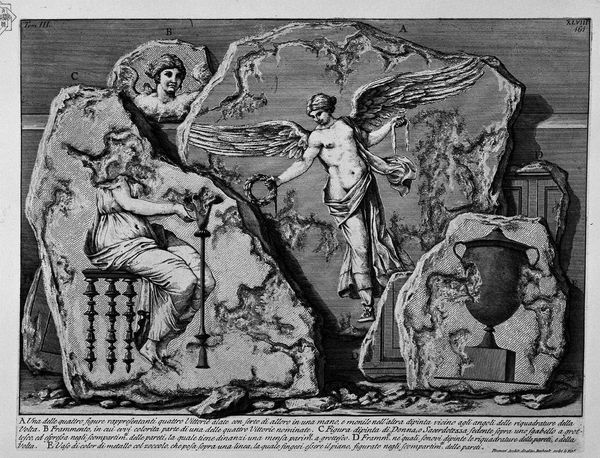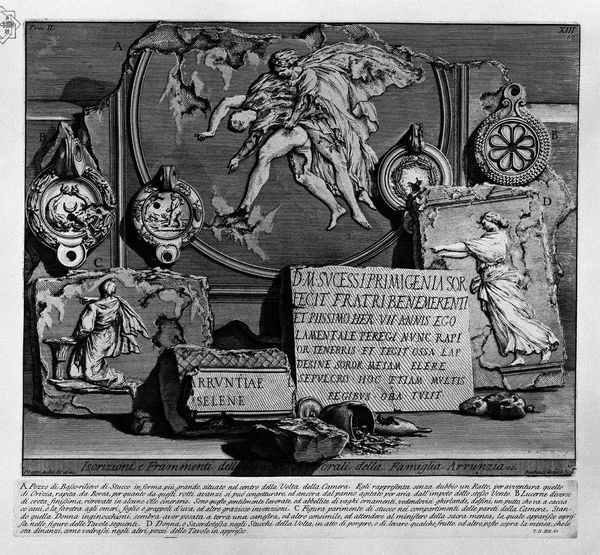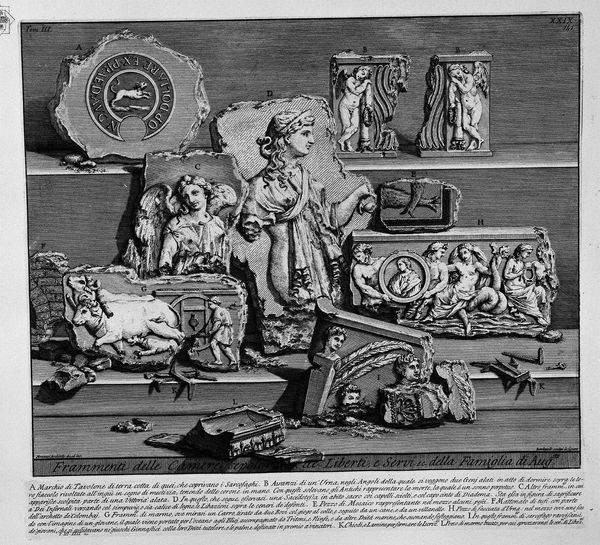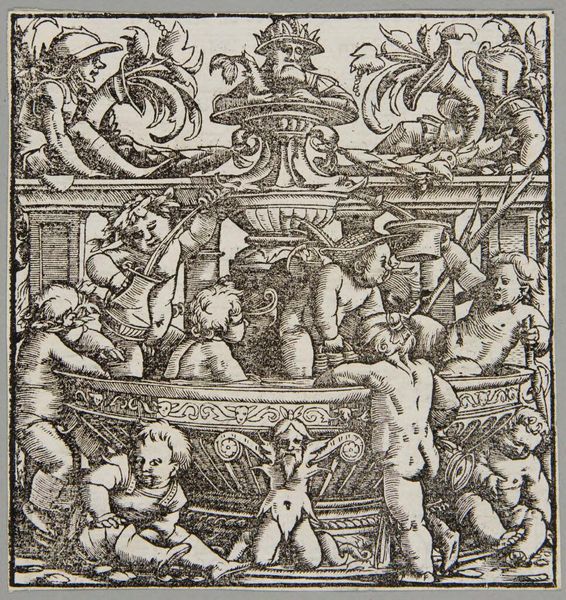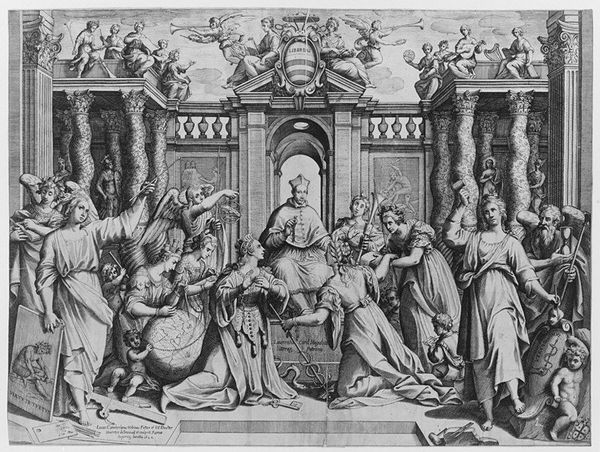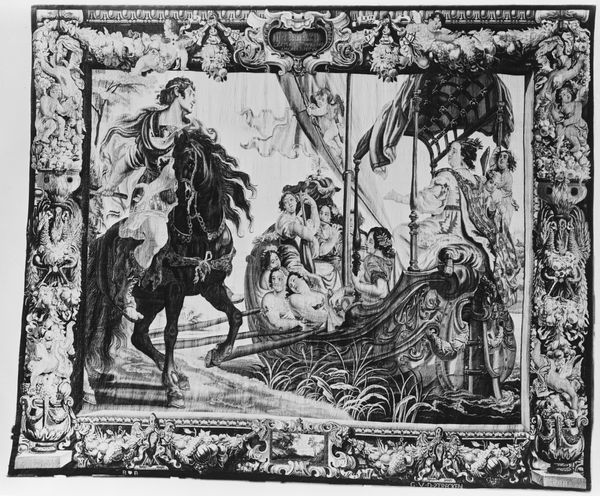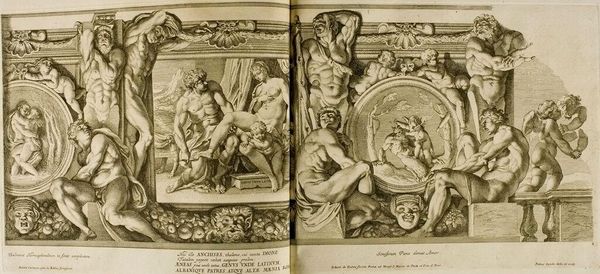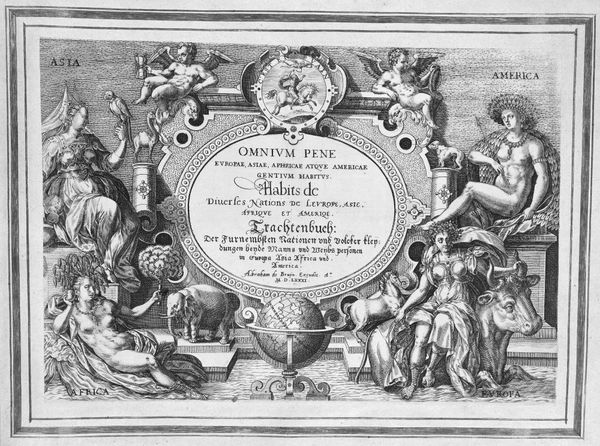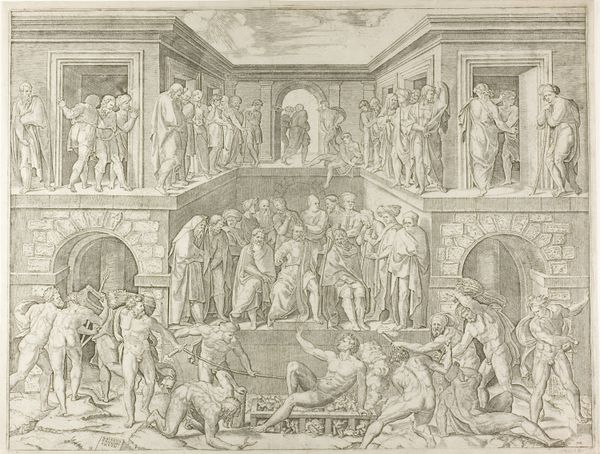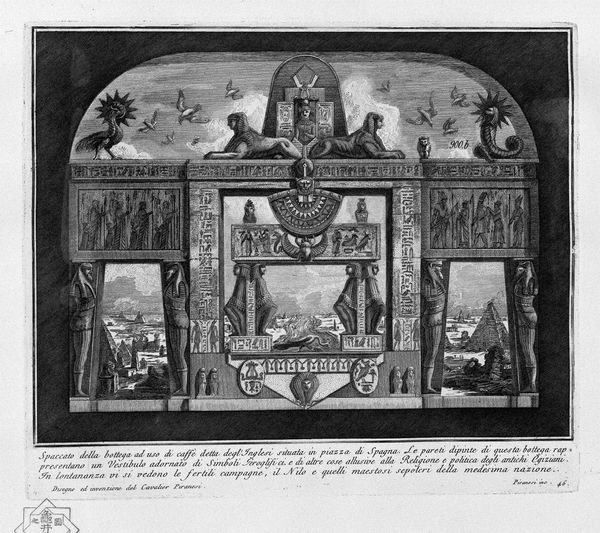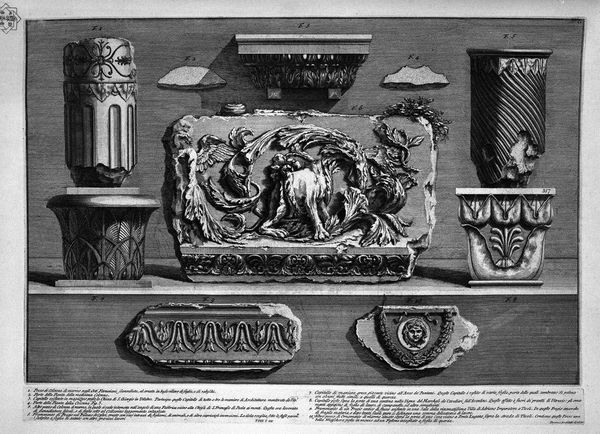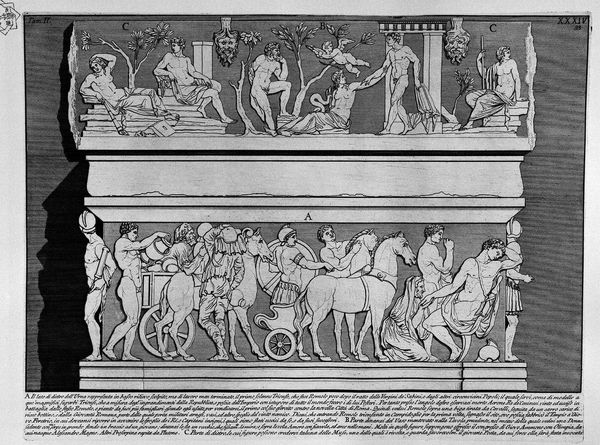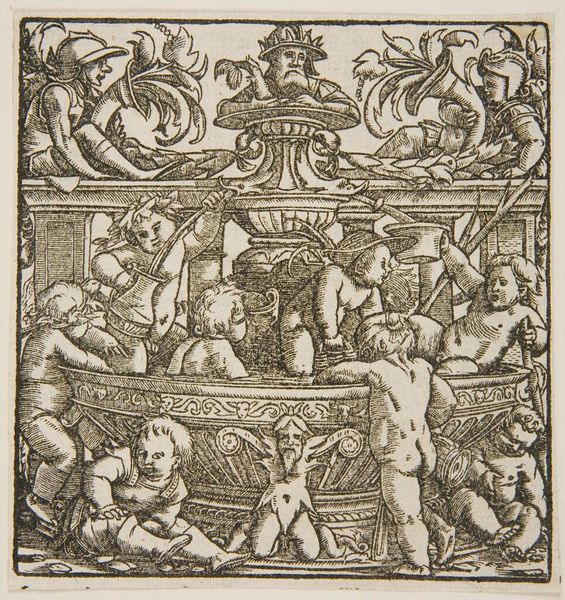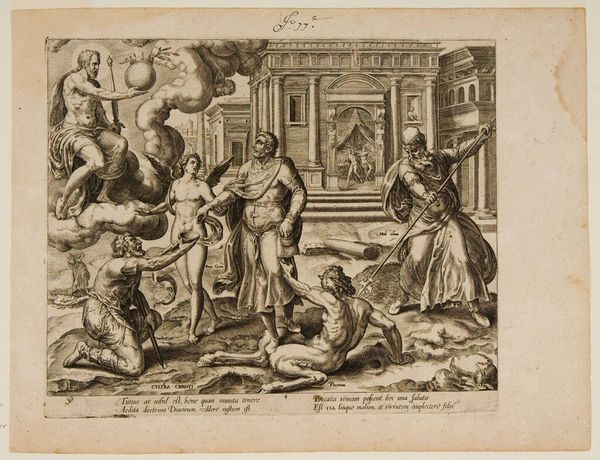
The Roman antiquities, t. 2, Plate XXXV. Rear of the previous special urn. 1756
0:00
0:00
print, photography, engraving
#
portrait
# print
#
greek-and-roman-art
#
figuration
#
photography
#
black and white theme
#
highly detailed
#
roman-mythology
#
ancient-mediterranean
#
mythology
#
history-painting
#
nude
#
engraving
#
male-nude
Copyright: Public domain
Curator: Let's discuss Giovanni Battista Piranesi's engraving, "The Roman Antiquities, t. 2, Plate XXXV. Rear of the previous special urn.", dating back to 1756. My initial reaction is its intensity! The stark contrasts, the layering of visual information—it almost feels theatrical. Editor: What a striking print; the neoclassical details leap out. It immediately calls to mind complex themes of power, identity, and the construction of history in 18th century Europe. What details in particular spark these notions? Curator: Well, think about how Piranesi represents the past. The meticulous depiction of the urn fragment isn't just about archaeological accuracy; it's an active engagement with classical ideals. This engraving comes out of an era hungry to reconcile itself with its complicated past. These aren’t simple representations, but charged political and cultural statements. Editor: Precisely! Consider how this era understood gender and myth. The fragment featuring Lersilia and Romulus feels laden with ideological implications about marriage, settlement, and citizenship. The depicted abduction, or act of consolidating disparate populations of Romans—is fraught! The artist employs the visuals to suggest a "natural order". How do you interpret the semiotic weight of these depictions? Curator: Absolutely, it's not neutral history. The idealized bodies and the very act of capturing these supposed artifacts constructs a narrative of cultural and gender dominance. I am struck by the way Piranesi juxtaposes scenes of violence with the tenderness, such as the marriage symbolism that points to a complicated and oftentimes contested narrative. Editor: Agreed. The meticulous linework lends a hyper-reality that speaks volumes, a celebration of antiquity entwined with colonial ambition, wouldn't you say? It's a piece that continues to generate nuanced discussions. Curator: A truly fitting end. And of how art engages in ongoing cultural dialogues on subjects that resonate far beyond Piranesi’s original intentions!
Comments
No comments
Be the first to comment and join the conversation on the ultimate creative platform.
